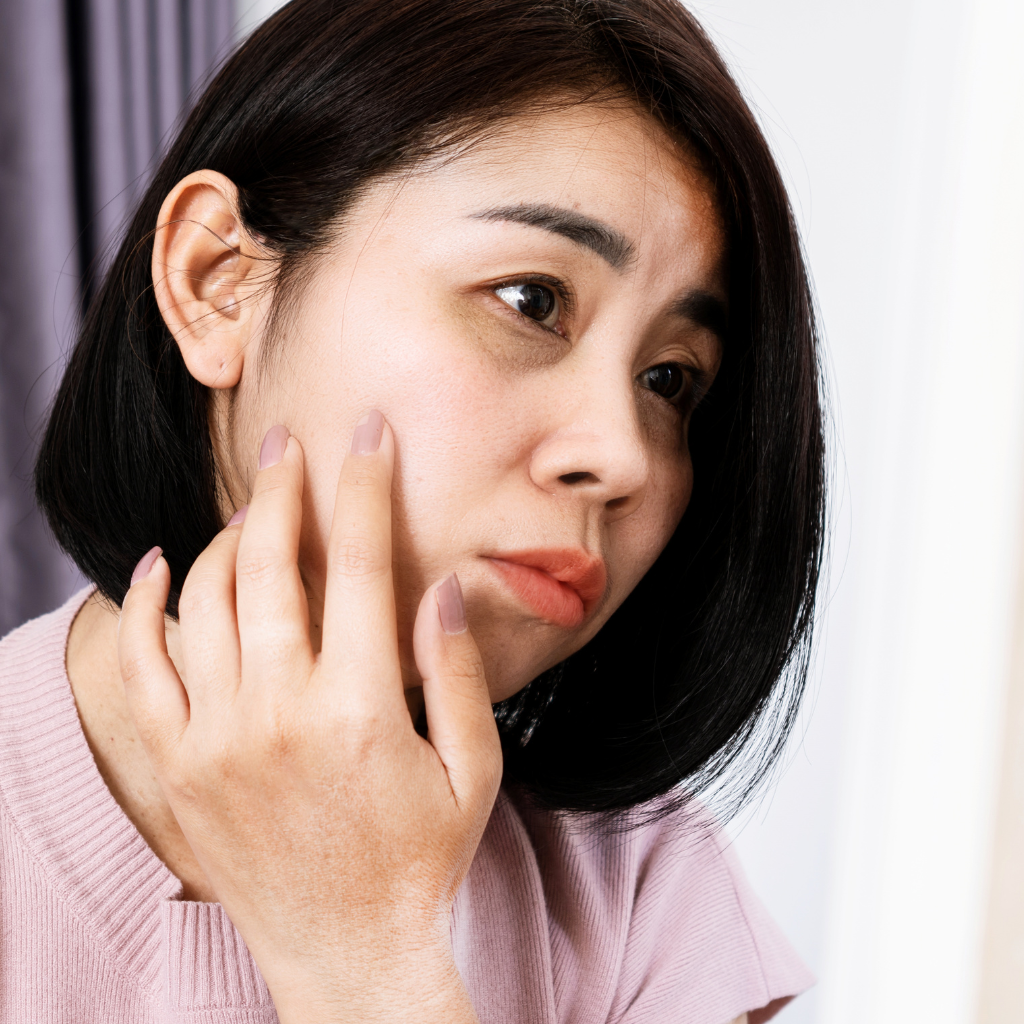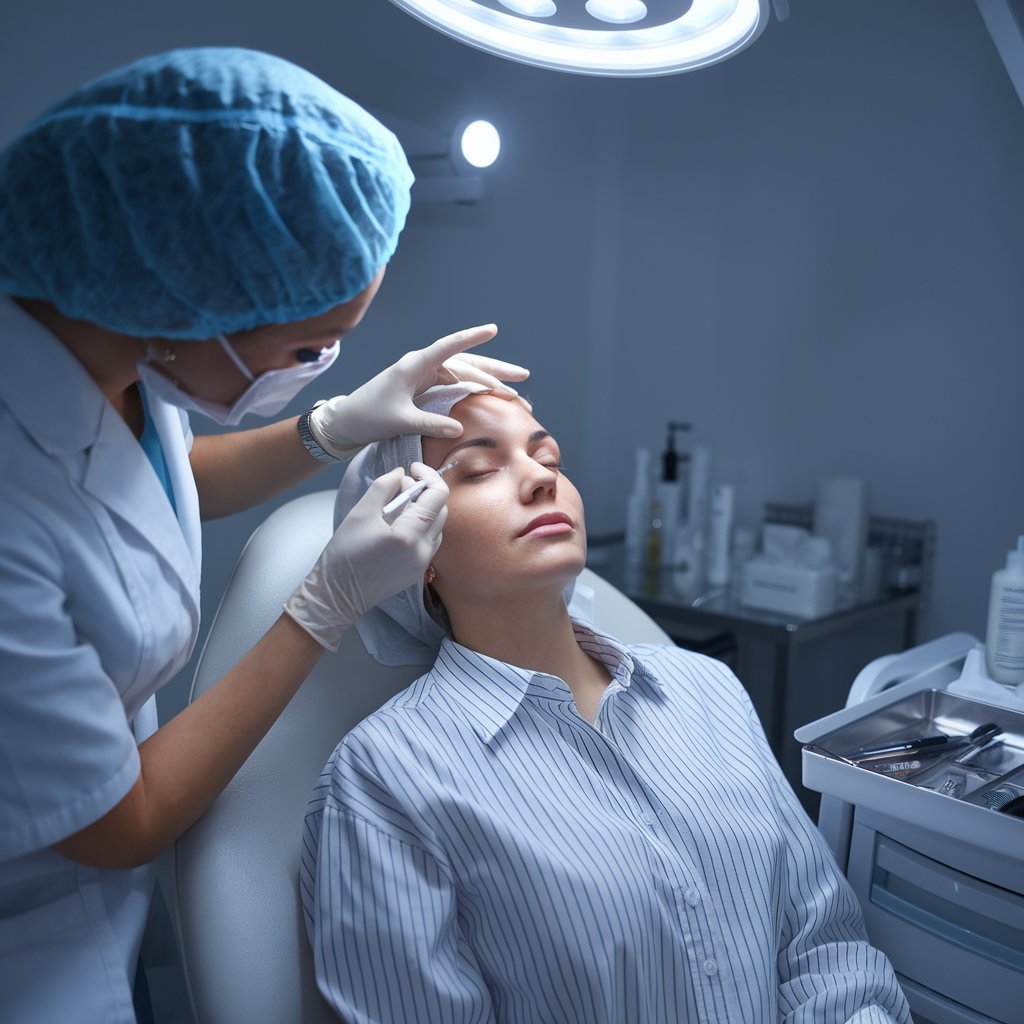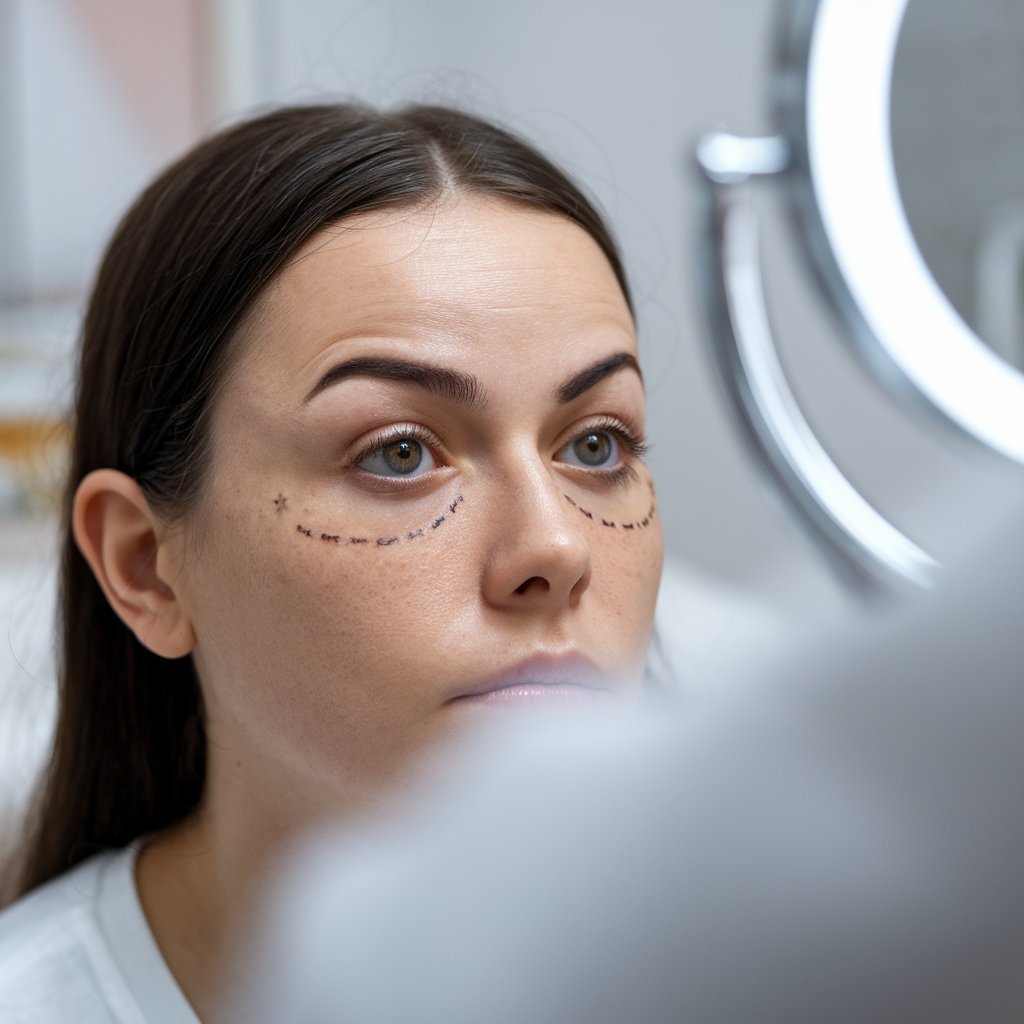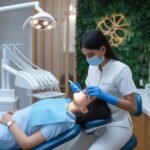Can Botox Be Used Under the Eyes? Cost of Under-Eye Botox Explained
- Home
- Anti-aging
- can botox be used under eyes

Botox can be administered under the eyes to target dynamic wrinkles through muscle relaxation, yet its effectiveness for true eye bags and dark circles is limited. Those wondering can Botox be used under eyes should note that while it may reduce fine lines, it’s not a cure-all for under-eye concerns. The procedure’s cost in India typically ranges from ₹5,000* to ₹15,000* per session, contingent upon location and provider expertise. Potential side effects may include bruising and temporary muscle weakness, with professional administration being essential for safety. Exploring further will reveal additional insights into alternatives and thorough approaches for under-eye concerns.
Key Takeaways
- Botox can be used under the eyes, but its effectiveness for fine lines and dark circles is limited and controversial.
- The cost of under-eye Botox ranges from ₹16,000* to ₹48,000* per session, depending on location and practitioner.
- Botox primarily targets dynamic wrinkles, while dermal fillers might be better for addressing bags and puffiness.
- Side effects of under-eye Botox include bruising, swelling, and rare instances of temporary blurred vision or ptosis.
- Consultation with a qualified Botox treatment provider is essential to assess suitability and obtain an accurate cost estimate.
How Does Botox Work for the Under-Eye Area?
Botox, a neuromodulator, functions by temporarily inhibiting the release of acetylcholine at the neuromuscular junction, leading to muscle relaxation decreased muscle activity, and the appearance of dynamic wrinkles around the eyes.
This mechanism offers potential benefits for addressing wrinkles under the eyes, though its efficacy compared to dermal fillers requires careful assessment.
Understanding the differential application and outcomes of Botox and dermal fillers is essential in optimizing aesthetic treatment for the periorbital region.
Botox to Treat Around the Eyes: How It Works and Its Benefits for Wrinkles
In the domain of aesthetic medicine, the application of botulinum toxin type A, commonly known as Botox, to the periorbital region has garnered significant attention for its efficacy in addressing fine lines and wrinkles.
Botox under the eyes targets muscles around the eyes, where repetitive motions contribute to wrinkles. This botox treatment involves injecting small amounts directly into these muscles to reduce the appearance of wrinkles.
Botox works by relaxing muscles, thereby diminishing the formation of dynamic wrinkles and smoothing the skin. The benefits of Botox include its ability to serve as an effective treatment for fine lines and wrinkles without the need for invasive surgery.
Is Botox Effective for Under Eye Wrinkles?
While Botox has proven effective for addressing wrinkles around their eyes, its application, specifically under the eyes, requires a nuanced understanding of the anatomical and physiological characteristics of this delicate area.
The effectiveness of Botox for under-eye wrinkles lies in its ability to paralyze the muscles responsible for dynamic wrinkles temporarily. However, its use in the under-eye area is controversial due to potential side effects, including bruising and insufficient improvement in fine lines.
Botox injections under the eyes must be administered with precision, as the thin skin in this region increases the risk of adverse outcomes.
The botox cost varies by region and provider expertise. In cases of under eye wrinkles, botox or filler may be considered, each with distinct mechanisms and outcomes.
Comparing Botox and Dermal Fillers for Under-Eyes
Although both Botox and dermal fillers serve to enhance the under-eye area, they function through different mechanisms and are suitable for addressing varying concerns.
Botox works by temporarily relaxing the muscles, thereby reducing under-eye wrinkles and improving the appearance of wrinkles. In contrast, dermal fillers add volume and hydration, effectively treating bags under the eyes and dark circles.
The cost and number of units required for Botox vary based on individual needs and desired outcomes, while dermal fillers may offer longer-lasting results. Each procedure carries potential side effects, and professional consultation is recommended to determine the most suitable approach for the eye area.
- Botox for muscle relaxation: Reduces the appearance of wrinkles.
- Dermal fillers for volume: Alleviate bags under the eyes.
- Consultation importance: Tailors treatment to specific concerns.
How Much Does It Cost to Get Botox Under the Eyes?
The cost of Botox injections for the under-eye area can vary widely, with an average price range typically from ₹15,000* to ₹45,000* per session, depending on the location and the practitioner’s expertise.
Several factors influence the overall cost, including the number of units required, which can differ based on individual anatomical considerations and the desired aesthetic outcome.
Patients should consult a qualified healthcare provider to develop an appropriate treatment plan and receive an accurate cost estimate.
Average Cost of Botox Injections for Under Eye Area
Determining the average cost of Botox injections for the under-eye area involves various factors that influence pricing. When considering getting Botox under your eyes, it is essential to understand that the cost of Botox treatment can vary considerably.
Pricing is often dependent on the number of Botox units required to achieve desired outcomes.
- Geographical location: The cost may differ based on regional pricing variations.
- Practitioner’s expertise: Fees can fluctuate depending on the expertise and reputation of the medical professional performing the treatment.
- Clinical setting: Costs may vary between medical spas and dedicated dermatology clinics.
Individuals seeking answers to the question, “How much does Botox cost for eyes?” must consider these elements to determine whether Botox is a viable option for addressing under-eye concerns through Botox injections.
Factors Influencing the Cost of Botox Under Your Eyes
When evaluating the cost of Botox for the under-eye area, several key factors must be considered to understand the potential financial commitment.
The cost of under-eye Botox varies greatly depending on the geographical location, practitioner expertise, and clinic reputation. Injecting Botox requires precision, and specialists may charge more for their proficiency.
The amount of Botox required also influences cost; typically, a small amount of Botox, such as 8 units of Botox, is used for this delicate area.
Additionally, the frequency with which a patient needs to receive Botox injections to maintain results impacts the overall expenditure.
Ultimately, while Botox is effective in treating fine lines under the eyes, these factors influencing the cost should be carefully assessed by prospective patients.
How Many Units of Botox Are Needed?
Estimating the number of Botox units required for under-eye treatment involves careful consideration of various factors, including the patient’s unique anatomical features and the severity of the wrinkles.
Botox is an injectable that is often used to improve the appearance of under-eye bags and wrinkles under the eyes. Typically, the skin under the eyes is treated with Botox using a minimal dose to avoid excessive administration and mild side effects.
The recommended units of Botox for under-eye treatment can vary:
- Mild wrinkles: Botox Often requires a lower number of units.
- Moderate to severe wrinkles May necessitate a higher dosage.
- Cost of under-eye Botox: This is influenced by the number of units needed, impacting the overall price.
This precise determination guarantees effective treatment tailored to individual needs.

Are There Any Side Effects of Botox Under the Eyes?
Botox injections under the eyes, while generally considered safe, can present potential side effects such as bruising, swelling, and temporary muscle weakness.
These reactions are typically mild and self-limiting; however, appropriate management and aftercare are essential to minimize their impact.
Healthcare professionals recommend adherence to post-procedure guidelines to guarantee peak recovery and patient satisfaction.
Possible Side Effects of Using Botox Injections
Although botulinum toxin injections are widely used for cosmetic purposes, including the treatment of wrinkles under the eyes, it is imperative to reflect on potential side effects before proceeding with such procedures.
When individuals get botox injections, side effects may arise, particularly when used directly under the eyes. Common side effects include mild bruising, swelling, or discomfort at the injection site. The effects of botox may also result in asymmetry or unintended muscle relaxation.
Possible side effects to reflect on:
- Bruising and Swelling: Treatments like Botox can cause localized bruising and swelling, typically resolving within a few days.
- Droopy Eyelids: Side effects may include temporary ptosis if the toxin migrates.
- Vision Changes: Rarely, using botox injections near the eyes can cause transient blurred vision.
These effects underscore the necessity for expert administration.
Managing Side Effects and Aftercare
Effective management of side effects is essential following botulinum toxin injections under the eyes to guarantee optimal outcomes.
Common side effects from botox, such as bruising or swelling, can affect the delicate skin around your eyes. Aftercare includes applying cold compresses to reduce these effects and avoiding vigorous activities that could exacerbate them.
It’s important to remember that Botox is not permanent, and periodic treatments are necessary to maintain the desired reduction in ageing around the eyes.
The botulinum toxin is used to treat dynamic wrinkles by temporarily paralyzing underlying muscles, which botox reduces effectively.
Patients should follow healthcare providers’ recommendations to minimize complications and guarantee the best results.
Regular follow-ups are critical to assess skin response and adjust future treatments as needed.
Can Botox Help with Eye Bags and Dark Circles Under the Eyes?
The application of Botox for addressing eye bags and dark circles remains a topic of clinical interest. However, its efficacy is primarily associated with muscle relaxation rather than tissue volume reduction.
Current evidence suggests that while Botox can potentially reduce the appearance of dark circles by softening the dynamic lines around the eyes, its impact on true eye bags is limited, as these are often caused by factors unrelated to muscular activity.
Further controlled studies are necessary to delineate the role of Botox in treating these specific aesthetic concerns effectively.
Effectiveness of Botox on Eye Bags
Botulinum toxin type A, commonly known as Botox, is frequently utilized in cosmetic dermatology to address various facial concerns, including eye bags and dark circles.
Botox is most effective in treating dynamic wrinkles around the eyes, which are caused by repetitive muscle movements. By temporarily paralyzing targeted muscles, Botox can also help reduce the appearance of eye bags and skin around the eyes.
Its efficacy lies in its ability to address dynamic wrinkles, thereby smoothing the under-eye area.
- Reduction of dynamic wrinkles around the eyes
- Smoothing of bags and wrinkles for a rejuvenated appearance
- Minimization of under-eye muscle activity
When strategically injected, Botox offers a non-invasive option for individuals seeking to improve the appearance of eye bags and wrinkles.
Does Botox Reduce the Appearance of Dark Circles?
How effective is Botox in reducing the appearance of dark circles under the eyes?
Botox is an effective neuromodulator primarily used to diminish wrinkles and eye lines, yet its role in treating dark circles under the eyes is limited. The cause of dark circles often involves pigmentation or vascular issues beneath the eyes, areas where Botox has minimal impact.
However, Botox can indirectly improve the appearance of dark circles by reducing wrinkles and eye bags, leading to a smoother skin texture around your eyes.
Clinical studies indicate that Botox, in conjunction with other modalities, may enhance the overall appearance of dark circles.
As a result, while Botox alone is not an exhaustive treatment for under-eye concerns, it can complement other interventions targeting eye bags and dark circles.
Treating Bags Under the Eyes with Botox: Does It Really Work?
Botox can effectively address bags under the eyes. While Botox is considered a viable treatment for facial wrinkles, its efficacy for treating bags under the eyes is limited.
Eye puffiness and lines around the eyes may sometimes be addressed using Botox and dermal fillers. However, it is essential to note that much of the under-eye puffiness stems from factors that Botox cannot directly mitigate.
- Wrinkles around the eyes: Botox can smooth these, but not the underlying puffiness.
- Lines around the eyes: Temporary reduction is possible, yet not a permanent solution.
- Natural Botox for eyes: Limited impact on under-eye bags compared to traditional fillers.
Ultimately, while Botox can affect your eyes by reducing certain wrinkles, addressing under-eye bags often requires a more thorough approach.

What Are the Alternatives to Botox Under Eyes?
In considering alternatives to Botox for under-eye concerns, laser treatments offer a non-invasive option with evidence supporting their efficacy in improving skin texture and reducing wrinkles.
Additionally, dermal fillers provide volume restoration to the periorbital area, effectively addressing hollowness and fine lines.
Natural methods, including topical retinoids and adequate hydration, also play a role in mitigating the appearance of fine lines and promoting skin health.
Exploring Laser Treatments for Under-Eye Wrinkles
When considering alternatives to Botox for treating under-eye wrinkles, laser treatments emerge as a scientifically validated option. These procedures employ focused light energy to stimulate collagen production, effectively reducing fine lines and wrinkles around the eyes.
Laser treatment offers a natural approach without the use of synthetic fillers, providing a rejuvenated appearance.
- Non-invasive: Unlike surgical options, laser treatments are non-invasive, reducing recovery time.
- Precision: Targeted application guarantees that the area around your eyes receives specific treatment, minimizing unwanted effects.
- Collagen Stimulation: By promoting collagen synthesis, these treatments enhance skin’s elasticity, resulting in a smoother, more resilient under-eye area.
Laser therapies present an evidence-based alternative, offering a compelling option for those seeking non-surgical methods to address under-eye wrinkles.
Using Dermal Fillers as Alternatives
While laser treatments offer a promising non-invasive option for under-eye rejuvenation, those seeking alternatives to Botox may also consider dermal fillers.
Dermal fillers, such as hyaluronic acid-based products, are injected into the periorbital region to address volume loss and minimize the appearance of fine lines. These substances work by attracting water, thereby restoring plumpness and providing a smoother skin surface.
Clinical studies suggest that fillers can effectively reduce tear trough deformities and enhance the overall aesthetic of the under-eye area. However, it is essential to note that the longevity of results varies, typically lasting between six to twelve months.
Adverse effects, though rare, may include bruising, oedema, or asymmetry, underscoring the importance of administration by a qualified healthcare professional.
Natural Methods to Reduce Fine Lines and Wrinkles
Although Botox is a popular choice for addressing under-eye wrinkles, some individuals prefer natural methods to minimize fine lines and wrinkles in this delicate area.
Evidence-based alternatives focus on enhancing skin elasticity and promoting hydration, which can improve the appearance of periorbital skin.
- Topical Retinoids: These vitamin A derivatives are known for their efficacy in stimulating collagen production, thereby reducing fine lines.
- Hyaluronic Acid Serums: This naturally occurring substance attracts moisture to the skin, enhancing hydration and plumpness.
- Antioxidant-rich Diet: Consuming foods high in antioxidants, such as vitamins C and E, supports skin health by combating oxidative stress.
These natural interventions can serve as adjunctive measures or standalone alternatives, offering benefits without the potential side effects associated with neurotoxin injections.
Conclusion
To summarize, while Botox is primarily used for smoothing wrinkles, its application under the eyes remains controversial. The procedure may offer temporary relief from fine lines, but it is not a definitive solution for eye bags or dark circles. The cost varies, typically ranging from ₹5,000* to ₹15,000*, depending on the provider and location. Potential side effects include bruising and asymmetry. Alternatives such as dermal fillers or laser treatments should be considered for more effective results in addressing under-eye concerns.
*For accurate pricing, please call and confirm with Tune Clinical Aesthetics.

Highly skilled cosmetologist at Tune Clinical Aesthetics, specializing in advanced skin and hair treatments.





